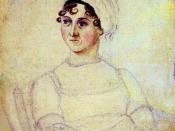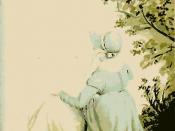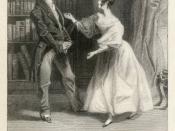IT'S A TRUTH UNIVERSALLY ACKNOWLEDGED. . .
Do universal truths and values stand the test of time? This article will explore values raised in Jane Austen's novel Pride and Prejudice, published almost 200 years ago in 1813, and compare them to those raised in the film Bridget Jones's Diary, based on the novel by Helen Fielding and directed by Sharon Maguire, in 2001.
Those who have read Jane Austen's Pride and Prejudice will find some familiar characters and elements in Bridget Jones's Diary. Similar themes are raised--the gaining of self-awareness, moral growth, marriage and motives for it, expectations and consequences of marriage, appearance and reality. It doesn't take much deduction to determine that Helen Fielding is an Austen admirer, but there are quite big differences and it is the differences that make the film more relevant to today's society.
But let's first look at the historical context of Austen.
Around the time of Austen's writing, one of the effects of the French Revolution in England was to disturb the status quo and to make people question the social mores underpinning society and this is evident in Jane Austen's work, where her criticisms are revealed through authorial intrusion, irony and characterisation.
The values of the novel's context include hierarchal notions of class, in which social activities, lifestyles and attitudes are dependant. Another value is reinforced by a male-dominated society, where the women are to be obedient and rely on men, and sexuality is not confronted or mentioned.
The ownership of land was the real paradigm of class. The landed gentry were the apogee of society and in most cases this was predetermined through heredity. When someone died, there were no inheritance rights for women--hence the need to marry women off to financially secure men.
As Jane Austen states in...


